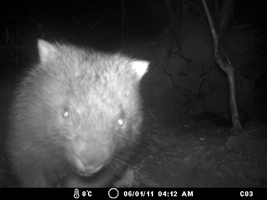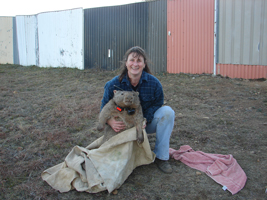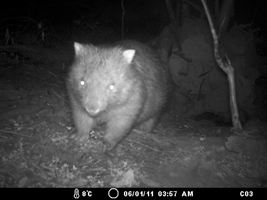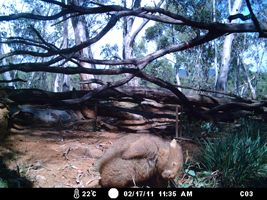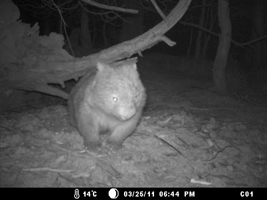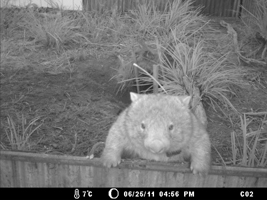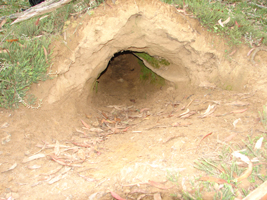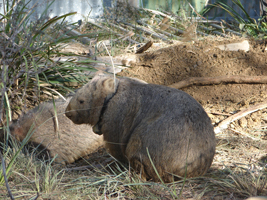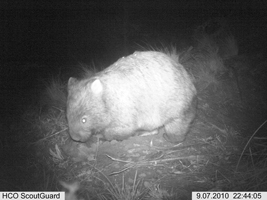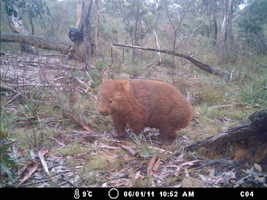You are here
WOMBATS
In addition to the work of ScatsAbout Georgeanna Story is embarking on the PhD project 'The impact of roads on the common wombat (Vombatus ursinus), from the individual to the population'. Within this project there are two streams of research: 'Adapting to roads: Can we help wombats survive the vehicle invasion?' and ‘Sociality and dispersal in common wombats (Vombatus ursinus). How do they influence the success of rehabilitated wombats released into free-living populations?’
This research is examining how populations in areas of high roadkill function. Do all wombats living in the vicinity of roads eventually perish or are transient wombats more sucseptible, is there a sex bias in the mortality and how are the individuals that die replaced within the population? Using gps radiogollars we are also looking at how wombats living in roadside environments use the roads and if the presence of road crossing structures like drainage culverts help reduce mortality.
The second area of this research is monitoring the behaviour of released wombats to evaluate their ability to integrate into a wild population. Bare-nosed wombats are routinely rescued, rehabilitated and released back into the wild by wildlife rescue organisations across south-eastern Australia, with an average of 100 wombats released in NSW annually. Rehabilitated wombats may vary in their behaviour, activity patterns and survival rate when compared to wild wombats, however few studies have researched released wombats or examined factors influencing release success. Monitoring of released wombats will identify whether animals can feed themselves, find adequate shelter, settle into an area and protect themselves from other wombats and predators.
The final component of the research aims to develop a census technique that can estimate wombat numbers across different densities. By surveying a combination of wombat signs, such as burrow presence, burrow activity and scat abundance wombat density can be calculated without having to interfere with the wombats. Such a census can be used for many wildlife management decisions, including release site assessment, environmental impact assessments and culling application assessments.
Support for this project has been provided by The Royal Zoological Society of New South Wales (Ethyl Mary Read Research Grant), Australian Geographic (Seed Grant) and RSPCA Australia (Alan White Scholarship). Thanks should also go to Lorraine and Dianne of NARG for supply of the rehabilitated wombats and property owners, Martin Royds, James Royds, Jamie Ramm and the Shoemark family of Braidwood Ray White Real Estate, whose properties the research is completed.

